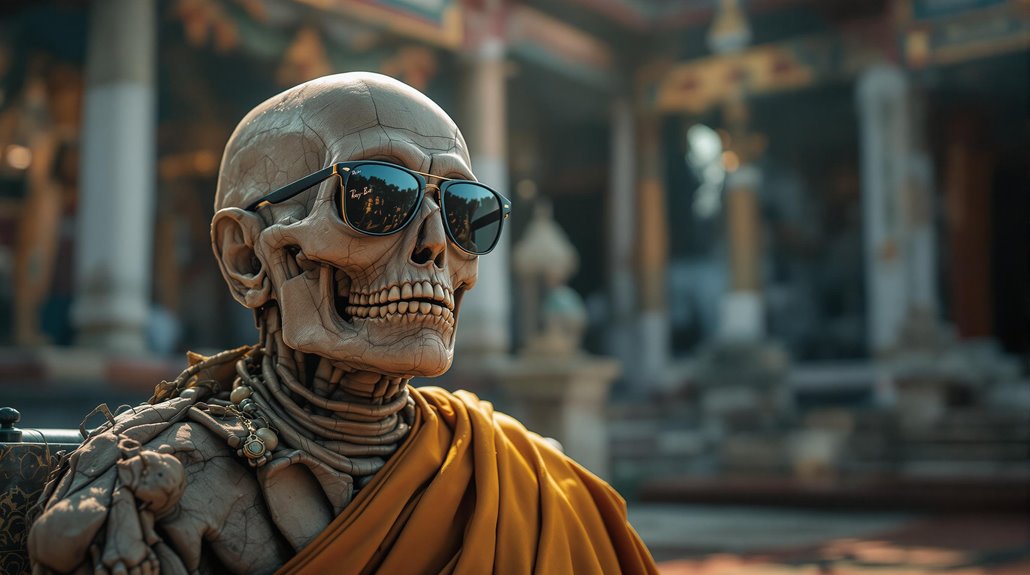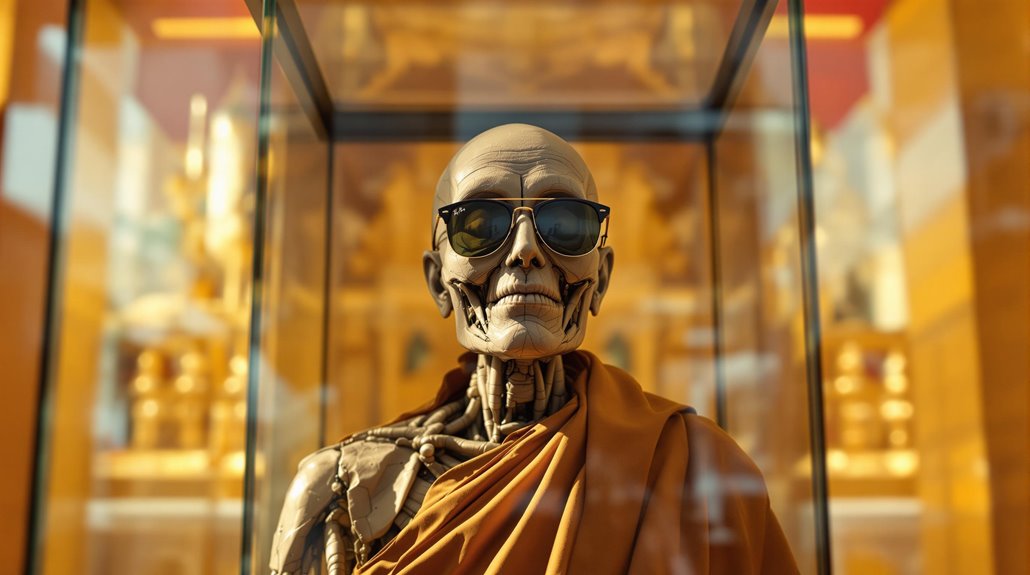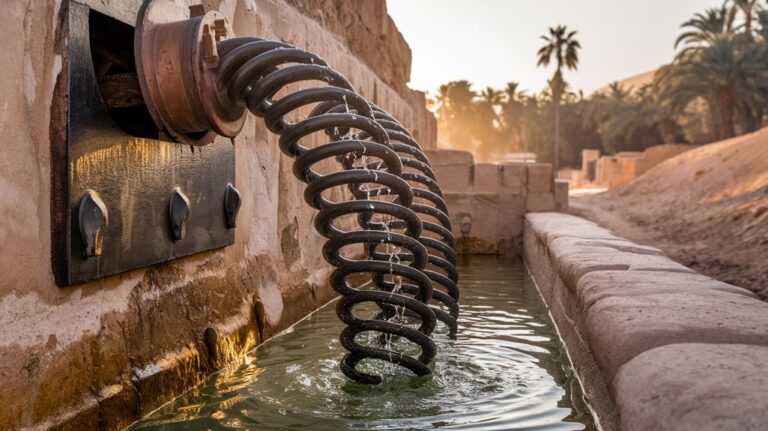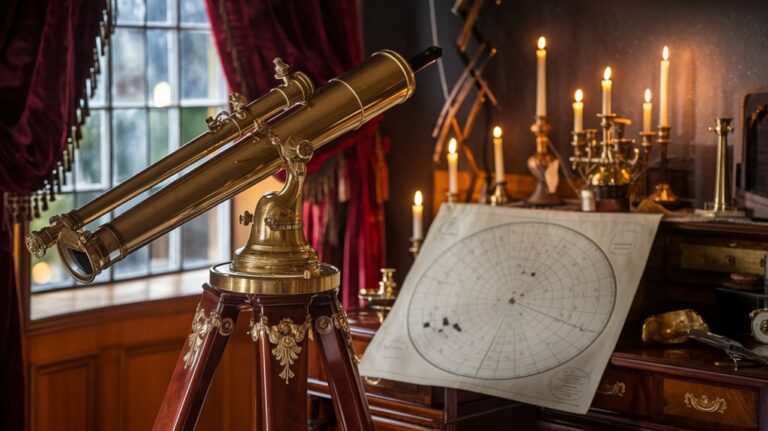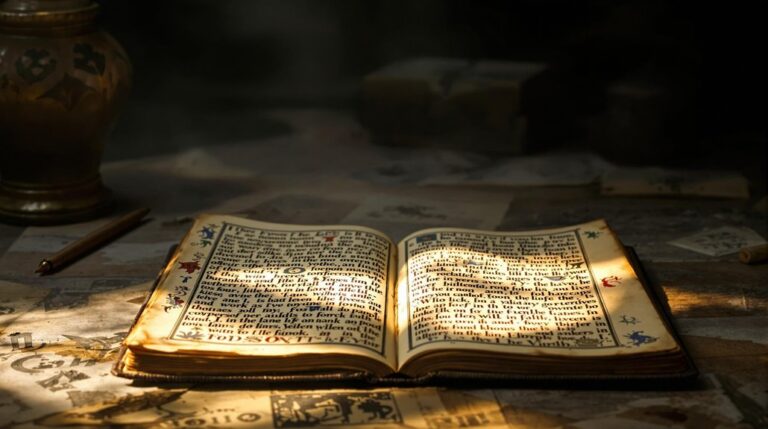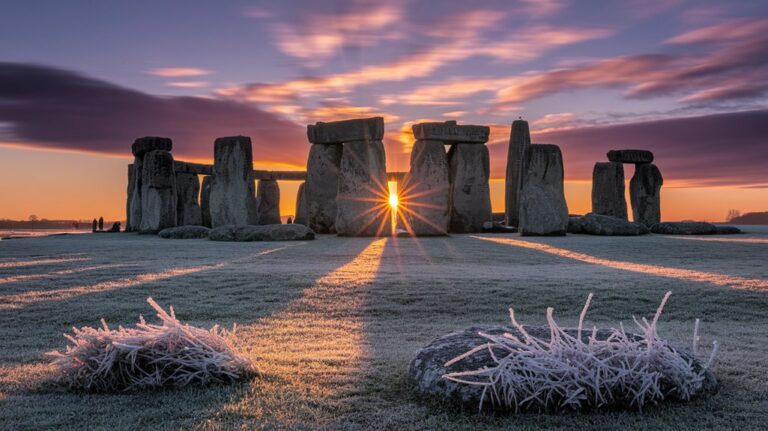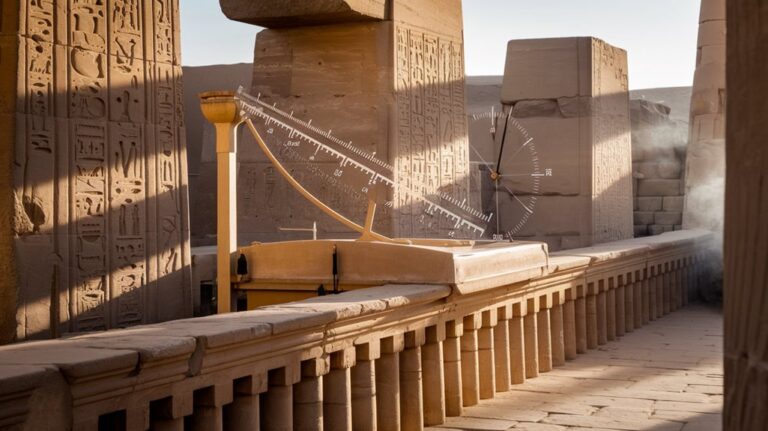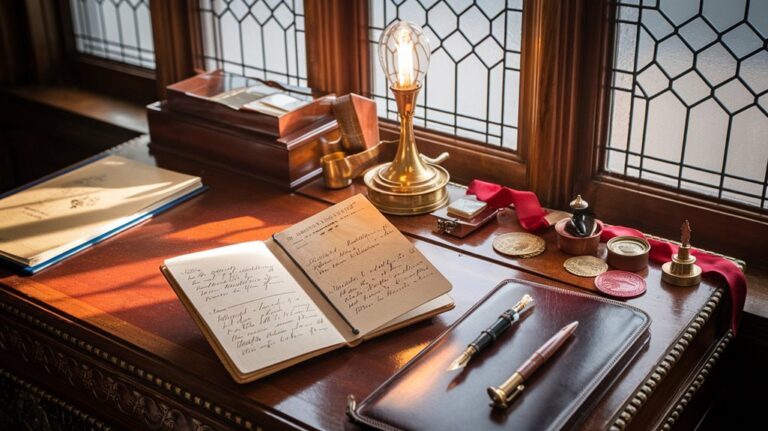The Mysterious Ray-Ban Monk of Koh Samui
You've probably never imagined a mummified monk wearing Ray-Ban sunglasses, yet that's exactly what you'll find at Thailand's Wat Khunaram temple. This isn't a tourist gimmick or modern art installation—it's the preserved body of Luang Pho Daeng, a former family man who transformed into one of Buddhism's most intriguing figures. His remarkable story of spiritual dedication, culminating in a self-predicted death in 1973, raises fascinating questions about the limits of human consciousness and physical preservation.
The Journey From Father to Revered Monk
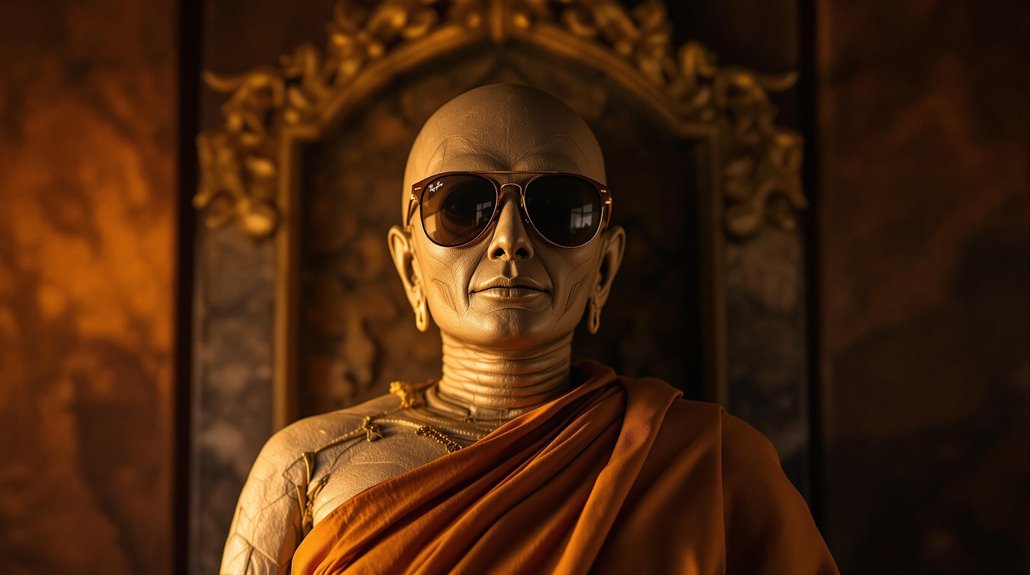
Before becoming one of Thailand's most revered monks, Phra Kru Samathakittikhun lived as a traditional family man on the island of Koh Samui. Born in 1894, he'd briefly explored monastic life in his twenties but chose to return to lay life, where he built a successful business and raised six children with his wife.
At age 50, he experienced a profound spiritual awakening that would transform his life's direction. Despite his family responsibilities, he felt called to return to monasticism in 1944. As he grew older, he developed such deep spiritual insight that he accurately predicted his own death.
With his wife's blessing and his children now grown, he took his vows at Wat Khunaram temple, where he'd eventually become abbot. His shift from businessman to monk wasn't just a personal choice – it marked the beginning of his journey to become one of Thailand's most influential Buddhist leaders. During World War II, before his return to monastic life, he had established himself as a successful businessman and philanthropist.
A Life Dedicated to Extreme Meditation
While most Buddhist practitioners followed traditional meditation routines, Phra Kru Samathakittikhun pushed the boundaries of spiritual discipline through extreme meditation practices.
You'd find him at Wat Khunaram temple, where he mastered Vipassana meditation through intense concentration and mindfulness techniques.
His ascetic rituals were extraordinary – he'd meditate for up to 15 days without food or water, despite doctors' warnings about the health risks.
Living on just one simple meal daily from the same bowl, his meditative practices went far beyond conventional limits.
He claimed he needed no nourishment during these marathon sessions, demonstrating an exceptional level of mental and physical control.
Unlike the simple one minute of mindfulness that most practitioners use, his meditation sessions stretched for days on end.
His dedication to extreme meditation wasn't just about personal enlightenment; it transformed him into one of Thailand's most renowned monks, inspiring countless followers who believed in his supernatural abilities.
Like the practitioners at Dipabhāvan, he maintained strict silence during his intensive meditation periods.
The Final Meditation and Self-Mummification
In 1973, Luang Pho Daeng made a remarkable announcement to his followers – he'd foreseen his own death and planned to attempt self-mummification. He requested an upright glass coffin for display if successful, or cremation if his body decomposed.
While the exact details of his final meditation and self-mummification techniques remain unclear, traditional methods involve a nine-year process of consuming only bark, roots, and toxic tree sap to dehydrate the body.
In his last week, you would've found him in deep meditation, refusing food, water, and visitors. At age 79, he died in the lotus position, and his followers discovered his remarkably preserved body. Today, pilgrims visit Wat Khunaram temple to gain spiritual insights about life and death through his preserved remains. His dedication to Buddhism was evident through his studies in Bangkok, where he mastered meditation and scriptures before returning to teach on Koh Samui.
They placed him in a glass case as requested, later adding Ray-Ban sunglasses to cover his sunken eye sockets – where gecko eggs were eventually found in 2002.
Scientific Marvel: The Preserved Body
The scientific community remains fascinated by Luang Pho Daeng's remarkably preserved body, which has defied normal decomposition patterns for over five decades.
When researchers from the Bioanthropology Research Institute examined his remains in 2002, they discovered intact internal organs, including a shrunken but well-preserved brain. While his eyes had decomposed and were replaced with Ray-Ban sunglasses, the rest of his body maintains its original meditation posture.
The preservation techniques appear to stem from a combination of factors: his limited food intake, reduced oxygen consumption through deep meditation, and the temple's unique environmental conditions. In the week before his death, he entered a deep meditative state and refused all sustenance, which likely contributed to his body's preservation. His extraordinary abilities were demonstrated through his capacity to meditate for 15 days at a time during his life.
The biological implications of this case have sparked intense scientific interest, as it challenges our understanding of natural mummification processes and suggests previously unknown possibilities for human physiological control through meditative practices.
Sacred Tourist Site: Wat Khunaram's Famous Resident
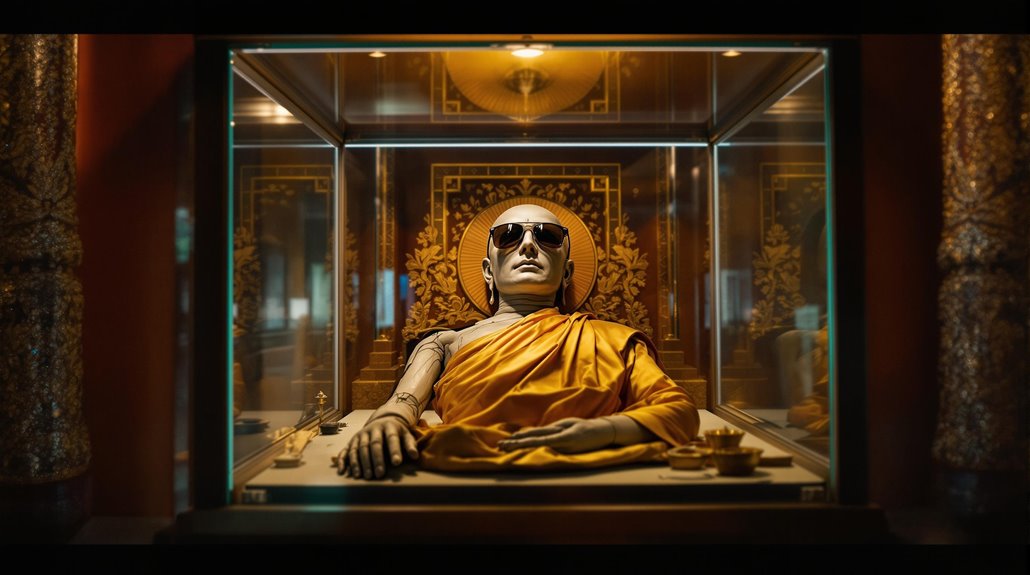
Nestled between Na Muang and Hua Thanon on Koh Samui's Route 4169, Wat Khunaram temple draws thousands of visitors each year to witness its famous resident – the mummified body of Luang Pho Daeng.
You'll find this sacred site just 6 km west of Lamai Beach, where spiritual tourism and local beliefs converge at the glass case containing the well-preserved monk.
What makes this display particularly striking are the Ray-Ban sunglasses adorning the monk's face, added to cover his sunken eye sockets.
The temple's location, easily accessible by rental car, motorbike, or taxi, has made it a must-visit destination for those seeking to understand Thai Buddhist culture.
As you observe Luang Pho Daeng's meditation posture, you'll experience a powerful reminder of Buddhist teachings on life's impermanence.
Visitors can participate in daily temple rituals and observe local monks performing traditional ceremonies throughout the day.
The monk's devotion to Buddhism began when he entered monkhood at age 20, dedicating his life to spiritual enlightenment until his death in 1979.

